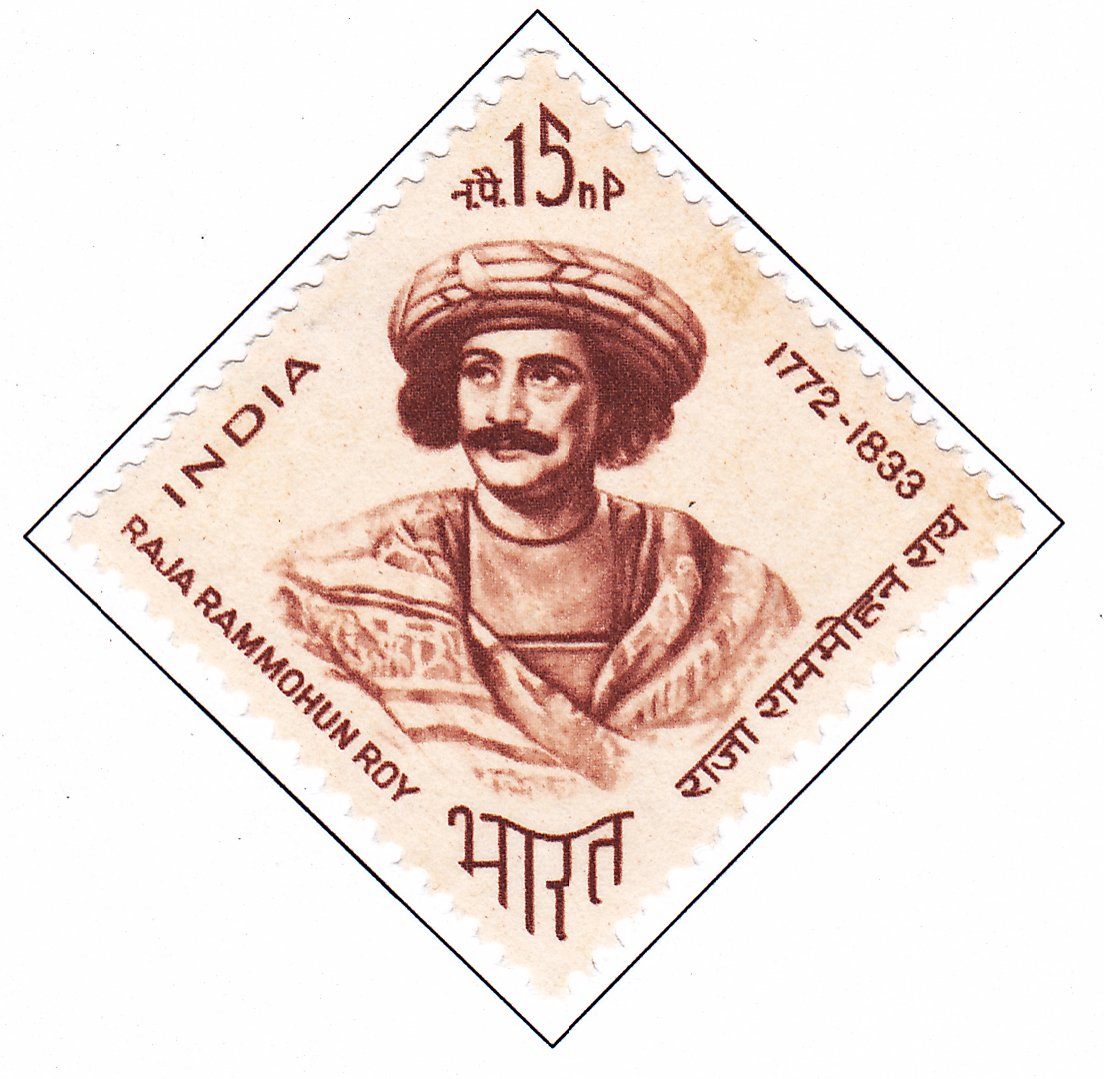Raja Ram Mohan Roy 1772-1833

Technical Data
| Date of Issue | September 27, 1964 |
|---|---|
| Denomination | 15 nP |
| Quantity | 2,500,000 |
| Perforation | comb 13 x 13½ |
| Printer | Security Printing Press, Nashik |
| Watermark | Asokan Capital Multiple [Up] |
| Colors | Brown |
| Catalog Codes |
Michel IN 376 Stamp Number IN 391 Yvert et Tellier IN 177 Stanley Gibbons IN 490 |
| Themes | Commemoration | Famous people | Headgear | Men | Reformers |
Raja Ram Mohan Roy holds a prominent position among the architects of modern India. Born on May 22, 1772, in an orthodox Brahmin family in Radhanagar, Bengal, he demonstrated exceptional intelligence and a philosophical inclination from a young age. Fluent in Bengali, Sanskrit, Persian, and Arabic, he delved deeply into Indian thought and philosophy.
Growing up in the era following Britain’s victory in the Battle of Plassey in 1757, Rammohun Roy was exposed to Western culture as British influence spread across India. His inquisitive nature led him to study English, Greek, Hebrew, and Latin to understand the roots of Western religion and culture.
His extensive knowledge and understanding of Eastern and Western cultures and religions inspired him to establish the Brahmo Samaj, a religious reform movement with a cosmopolitan approach. In his Persian treatise “Tuhaft-Ul-Muwahiddin” (A Gift to Monotheists), he advocated for the unity of God and argued that all religions naturally tend toward monotheism.
Rammohun Roy was a staunch advocate for social reform, campaigning tirelessly for the abolition of the practice of Sati (widow burning) and promoting female education, property rights for women, and widow remarriage. He founded the Brahmo Samaj in 1828, where people of all religions could worship together in a cosmopolitan environment.
As Pt. Jawaharlal Nehru noted in “The Discovery of India,” Raja Rammohun Roy was instrumental in laying the foundation of the Indian press. He published several newspapers, including a bilingual Bengali-English magazine and a weekly in Persian, aiming for nationwide circulation.
Beyond his contributions to social and religious reform, Raja Rammohun Roy played a crucial role in shaping India’s political landscape. He advocated for secularism and constitutional rights, challenging oppressive laws and policies through petitions and memorials. His patriotism was rooted in a belief in the solidarity of humanity and a fervent love of liberty.
Raja Rammohun Roy traveled to England as an envoy of the Emperor of Delhi in 1830 and passed away there on September 27, 1833. In honor of his legacy as a key figure in India’s modernization, the Posts and Telegraphs Department issued a special commemorative stamp on September 27, 1964, marking the anniversary of his death.
